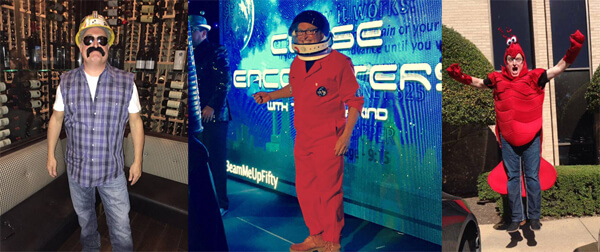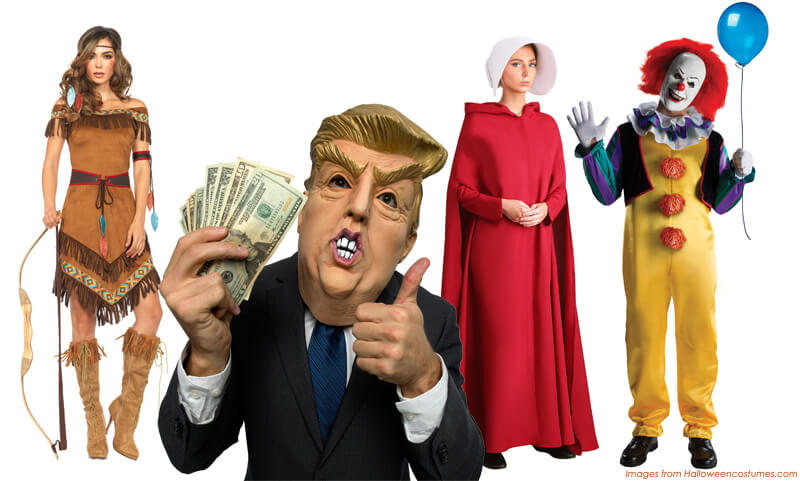Find any of these costumes offensive? What if they were worn by employees in your workplace? When it comes to dressing up for Halloween at work, the space between fun and offensive is occupied by a very slippery slope.
So what’s an employer to do?
If you already have an office dress code, your job is easier. Most policies already include avoiding attire that might be offensive or make others uncomfortable. No-tolerance policies when it comes to discrimination, bullying and harassment can also come into play. Start out by simply reminding employees that these points in your policy statements still apply on Halloween.
Understand that what’s seen as inappropriate can be subjective. For instance, while it may have been once benign to wear a U.S. President’s or other political mask, workers these days may find it offensive or even threatening, especially if the costume includes other satirical elements or behavior. What’s considered too scary or sexy are extremely subjective, too. And the issue of cultural appropriation can mean that a costume that seems racist or inappropriate on one person, may not be consider the same when worn by another. For this reason, HR Today recommends maintaining room in your dress code for being able to handle complaints one-on-one and making it clear that disciplinary action will be considered on a case-by-case basis.

And do take those complaints seriously. Legitimate cases have been federally investigated that include complaints of being subjected to Halloween celebrations that go against an employee’s religious beliefs (conversely, refusing time off on October 31 to a Wiccan can be similarly unlawful) and costumes that are so culturally offensive to workers in legally protected classes such as immigrants, women, disabled persons, seniors or veterans that they’re seen as creating a hostile work environment.
Other considerations:
- Those in medical fields and hospital settings should consider cautioning their employees against costumes and decorations that depict death or dying. No one wants their lab assistant to show up as the Grim Reaper to their colonoscopy.
- Consider not allowing costumes and decorations in certain manufacturing, laboratory, health service and food service environments where they might present health or safety issues. Imagine the ramifications of getting a cape stuck in a machine or losing a fake eyelash in a bowl of soup.
- Proceed with caution on toy weapons. Even in Texas, it’s likely best to ban toy weapons in the workplace altogether. Sure, a brightly colored water gun will likely not be confused for a real gun, but not all toys are that obviously recognizable.
- Like any dress code, you may need to have certain standards in place for specific employees like a sales team that visits with prospects and clients. Communicate those exceptions and go out of your way to let new or contract employees and temp employees know what’s planned so that they’re not caught off-guard, either.
- HR Today recommends that, if promoting costumes and decorations turns out to be too tricky, consider alternatives like a Halloween lunch or potluck, an early office closing, or inviting the kids of employees to visit the office to trick-or-treat door to door (or desk to desk).
Don’t be frightened by Halloween in the workplace. Our own CEO Mark Turpin has been known to don a costume from time to time (usually for a charitable cause):

Just keep it simple and stick to your dress code. Remind employees that what they wear or do on Halloween isn’t forgotten the next day. A little common sense can go a long way in turning a tricky situation into a real treat.




